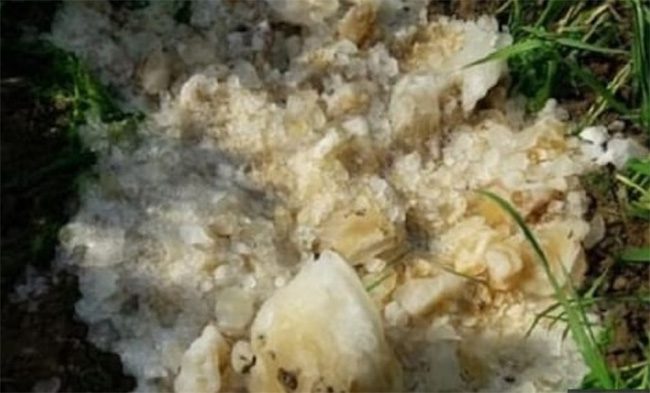Airplanes Do Not Have Large Water Tanks for Flushing, Yet Their Bathrooms Remain Clean.
During the summer season, when many people rush to travel, commercial airplanes are often packed with passengers. Perhaps a delicate issue always lingers in the minds of many travelers: Is the airplane restroom available? But have you ever wondered what happens after you press the flush button on an airplane?

Most airplanes are designed with restrooms at the rear. (Photo: ZeeNews).
According to Mental Floss, unlike conventional restrooms, an airplane cannot hold a tank full of water to flush waste from the toilet. Besides wasting hundreds of liters of water, having liquid in an environment that is constantly shaking, like an airplane, is not advisable.
In the past, airplanes used an electronic pumping system to move waste along with a deodorizing solution known as Anotec. This method was effective but posed a problem: airplanes had to carry large quantities of this solution, similar to storing water. This increased fuel costs and added weight to the aircraft. Naturally, airlines would prefer to carry more passengers than water or waste treatment solutions.
Since the 1980s, airplanes have utilized vacuum pressure to suck liquid and solid waste into a tank located at the rear of the aircraft. When you press the flush button, a valve at the bottom of the toilet opens, allowing waste to be sucked with extreme force straight into the tank. This tank is cleaned and disinfected after the aircraft lands.
The vacuum toilets on airplanes have a very strong suction, sweeping away all waste and cleaning it with a blue solution. Notably, airplane toilets are also coated with a non-stick Teflon layer that helps eliminate even the most “stubborn” waste.
Due to the pressure difference between the pipes and the restroom, waste will flow into the tank and down to the bottom of the aircraft. Here, all waste remains during the flight. This storage compartment is designed to be locked and can only be opened from the outside after the airplane has landed.

In 1982, modern toilets first appeared on Boeing aircraft for commercial flights.
According to a flight attendant named Garrett, a large aircraft like the Boeing 747 can hold more than 1,200 liters of waste. This volume is sufficient to accommodate hundreds of passengers throughout the flight, especially on long-haul journeys lasting several hours.
When the airplane lands, specialized ground crew trucks arrive to handle the cleanup. At that time, the waste is vacuumed into a container on the truck. Subsequently, staff will connect a hose to the container and pump in cleaning solutions to disinfect the entire interior. Finally, the waste is transported to a designated processing area, completing the procedure.
It may seem that the in-flight restroom is rigorously equipped and checked before each flight. However, in reality, these toilets can still become clogged if passengers throw diapers, soda can wrappers, or even cause leaks.
Nigel Jones, an aircraft engineering expert at Kingston University in London and a member of the Royal Aeronautical Society, recounts several instances of accidental wastewater discharge from airplanes. Such substances have even been colloquially referred to as “blue ice.”
Jones states that airplanes have never intentionally released toilet waste into the atmosphere, even in the past. But if a leak occurs in the discharge pipe, due to the extremely cold temperatures at high altitudes, any liquid that spills out will freeze immediately.
This was more common until the 1980s when laws prohibiting takeoff with leaking toilet systems were enacted.
In 2016, an Indian woman was injured by a… frozen waste block the size of a ball that fell from an airplane.
Specifically, Rajya Rani Gaud, who lives in the Aamkhoh village in the Sagar region of India, narrowly escaped death as the block of ice containing a mixture of waste and urine struck a nearby rooftop before hitting her.

An object suspected to be human waste fell from an airplane onto Fazilpur village.
Experts say they cannot determine exactly where the ice came from, but it is possible that a leaking airplane toilet allowed waste to escape and freeze as it fell to the ground.
A witness named Deepak Jain told The Times of India: “I was only about 25 feet away from the object when it fell.”
The Federal Aviation Administration (FAA) of the United States stated in the Mail Online: “Occasionally, tanks or pipes may leak. If this occurs at high altitude, the water will freeze immediately upon exiting into the atmosphere.”
However, if “blue ice” falls from an airplane, it will typically shatter and melt before reaching the ground. In unfortunate cases, it may melt as the aircraft approaches landing and disperse into tiny droplets.
There’s an important tip that can help passengers avoid long lines waiting to use the restroom. Cabin crew members say that the restroom is often free right after the seatbelt sign is turned off or before drinks are served.





















































